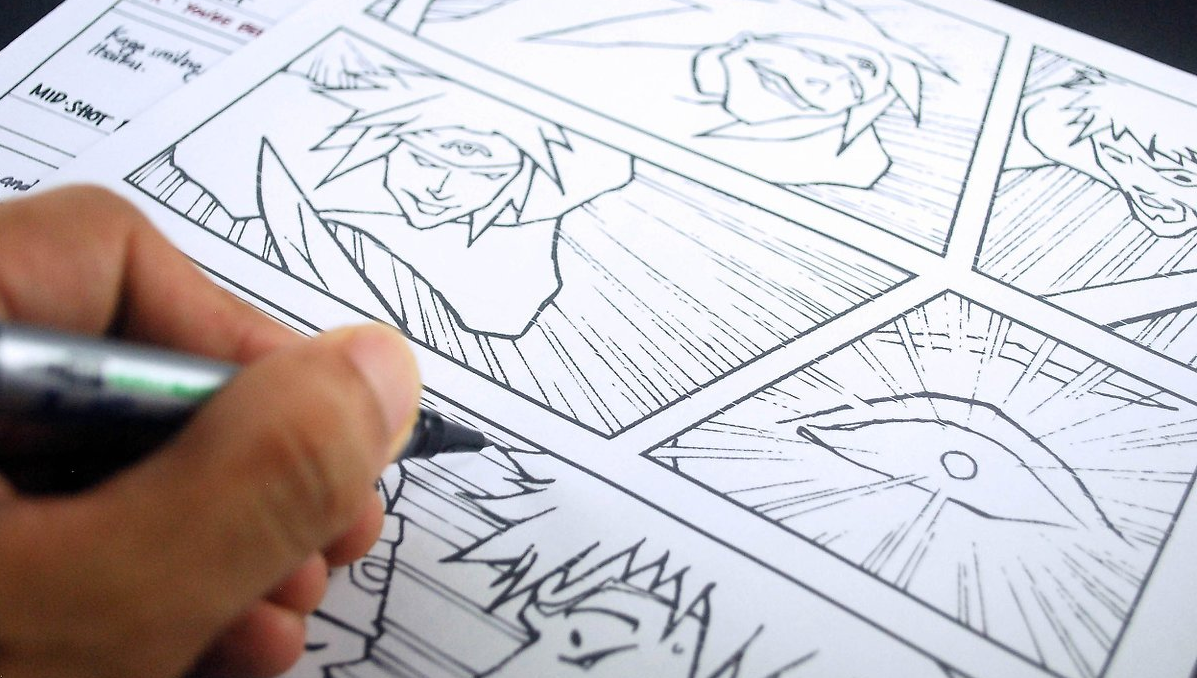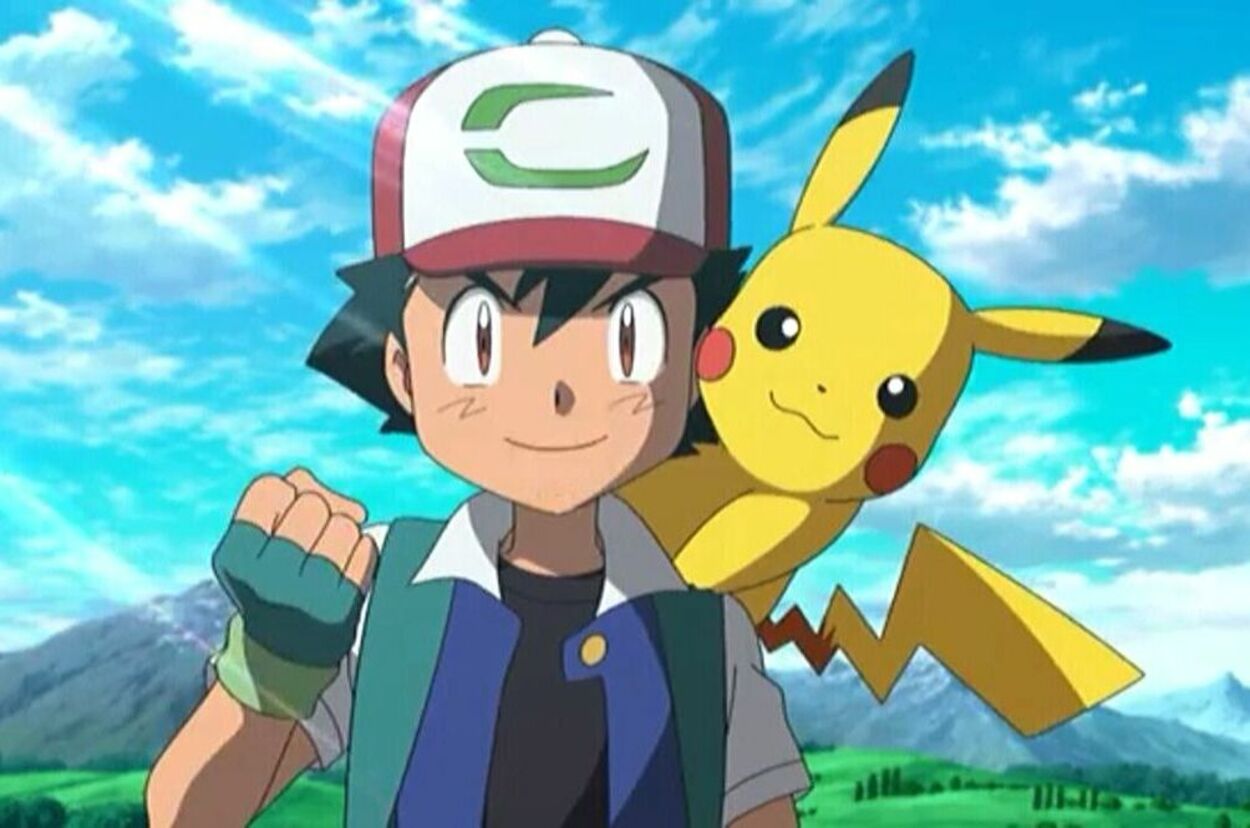Manga gives a heavy revenue for the publishing industry in Japan. It is a form of graphic novel that is published in black and white colors only and is famous for its multiple volumes.
It is a Japanese take on comic books targeted at a diverse audience, not just children. The word Manga is made up of 3 Japanese syllables and can be literally translated as funny or humorous pictures in the English language.
Manga in Japan gained its fan base after the second world war when the recovering nation needed something to cheer them up in those depressing times.
The iconic Manga style became the talk of the town in the 20th century when bans were lifted on such type of literature in the country.
It has now become a somewhat essential part of the flag bearer of the Japanese culture besides Kimonos and Anime.

Unlike western countries, Mangas are popular in Japan and are published in form of volumes, chapters, and episodes in weekly magazines.
The Manga Artists or Mangakas are also very respected for their continuous hard work. The interesting Plots and characters in anime are all thanks to these Manga artists.
In this blog I will answer all your questions about the significance of Manga and why is it so popular.
What is Manga?
Mangas are Japanese graphic novels or comic books.
Most manga adheres to a late-nineteenth-century Japanese style, and the form has a long history in earlier Japanese art. In Japan, the term manga makes reference to both comics and cartooning. Outside of Japan, the term is typically used to refer to Japanese-published comics.
Manga is read by people of all ages and walks of life in Japan. Action, adventure, business and commerce, comedy, detective, drama, historical, horror, mystery, romance, science fiction and fantasy, erotica, sports and games, and suspense are among the genres represented by the medium. A large number of manga series have been translated into other languages.
Why is Manga good?
That’s a tricky and subjective question that I can only answer as a fan, but I’ll try:
- Manga is inexpensive. In terms of cost per page, I can get a three-volume set of Fullmetal Alchemist for the same price as a hundred-page trade paperback of All-New X-Men. So, even though the latter has better coloring and larger pages, I still get a lot more story content. After all, it was invented to be made cheaply, to be affordable to everyone in Japan’s postwar depression!
- Manga has beautiful art that is full of dynamism and empathy.
- Many of our western comics have learned from Manga’s daring use of panel shapes, view angles, emotional close-ups, and visual metaphors. So the gap has narrowed somewhat, but generally, manga stories are told in a more subjective way about the feelings of the characters as they go through plot events, whereas western comics are a little more objective and about the events themselves.
- Manga has a clear artistic vision. With Manga, I know it’s the same artist/writer or artist and writer team, so retcons and aborted arcs or characters abruptly changing personalities are uncommon, and the tone of the art tends to match the manner of the story well.
- Manga is genuine. This can be cheesy at times, but it never avoids being emotional or just really over-the-top and awesome in order to appear detached and cool or to appear to be trying too hard. Manga isn’t ashamed of who it is, and I appreciate that!
- Manga does not only cover topics for a specific “young adult male” audience. It has comics about almost everything for almost everyone.
How can Manga help you to appreciate art and be artistic?
Unlike traditional books and literature, Manga relies on drawings to tell its story. Even when compared to comics Manga has more images and fewer phrases.
Manga is a creative amalgamation of images, words, and onomatopoeia. Manga has created its own visual language.
Mangas make less use of words since it makes the reader more confused and distracted this art form focuses on the imagery to convey its message. Which in my opinion is incredibly beautiful.
Manga is an art form that is appreciated by artistic and non-artistic people alike mainly because it is more subjective than objective.
The artist takes inspiration from human emotions and uses exaggerated features like large doe eyes in characters to convey these emotions without many words. The readers are enticed by the depiction of emotions and they come to love the art within.

The Manga was initially hand drawn which started from many rough drafts the final Manga that you get to read goes through many revisions corrections and redos to look that good.
The character designs and backgrounds are also equally important in Manga. All this effort by the artist is done so that the reader can be immersed in the story, the emotion, and the characters.
This is also the reason why people love this art form and try to have a more artistic outlook on things.
For instance, you may not see the normal food intently as much as you find ghibli characters cooking food interesting.
This is probably because of the fact that you appreciate the vivid colors and the hand-drawn animations more than what’s served on the plate in the real life.
Some of you might even try to draw these beautiful scenes mainly because you appreciate the emotional and artistic value it brings.
Similarly, Manga also depicts a distinct visual language that reflects the emotions and ideas of the characters. Many of us “normal” people are not accustomed to it, so we find them very interesting and attractive.
What’s so good about Manga’s storylines?
Following are the main features of a Manga storyline that makes it worth reading.
Art Style
The art style is the first thing that fills the reader pool.
If the Manga has some good character designs, pretty dynamic poses, expressions and backgrounds then it can get more readers and get more sales as well.
An Interesting Theme
Uniqueness always gets the eye.
Every famous Manga has a unique plot and theme for example Hunter x Hunter has been a Manga that went on many hiatuses but it always came back strong since it had a solid plot and story concept.
Strong Main Leads
It is a conventional thing but Mangas with strong main characters always attract readers. A high schooler with a killing notebook or a fun quirky guy with some deadly superpower.
Manga that features the main lead with a unique character design with some quirks and flaws is always appreciated by the audiences.
An Engaging Plot
Mangas contains A storyline that moves along, connecting any side stories into the theming and eventual ending of the main storyline, and achieving a suitable climax, attracting an audience.
Good pacing and a wonderful combination of drama, thrill, passion, and comedic relief within the confines of the story’s genre.
Memorable episodes that you will never forget because they were so cool, humorous, or emotionally fulfilling. These are characteristics of a good Manga.
Supporting Characters And Antagonists
A great Manga has a bunch of memorable side characters who not only push the plot forward but also leave an impact on the reader.
Especially the villains in the story who at some point teach a lesson to the protagonists and sometimes have some solid reasons to oppose the hero.
Does Manga have a variety of genres?
The most significant aspect of Manga is that there is something for everyone. There is a Manga for everyone, whether you favor high-school love comedies or high-fantasy epics.
Manga is classified primarily by audience, followed by genre.
Cardcaptor Sakura, for example, is for young girls’ favorite “magical girl” (sub-genre) Manga. However, this does not exclude a boy from enjoying the series.
That’s just how they’re sold. You would search for “shonen fantasy” or “shonen mystery” Manga if you were seeking Manga for a young boy who enjoys fantasy or mystery.
Primarily speaking there are a total of 4 Demographics for Manga.
- Shounen (for young boys)
- Shoujo (for young girls)
- Seinen (for the adult male audience)
- Josei (for the adult female audience)
Here are some famous Mangas from these demographics:
| Shounen Manga | Shoujo Manga | Seinen Manga | Josei Manga |
| Dragon Ball Z | Sailor Moon | Akira | Beauty Bunny |
| Naruto | Cardcaptor Sakura | Berserk | QQ Sweeper |
| Hunter x Hunter | Fruit Basket | Attack on Titan | Wotakoi: love is hard for otaku |
| Yu-Gi-Oh | Skip Beat | Monster | Perfect World |
| My Hero Academia | Say I Love you | Vagabond | Devils and realists |
Is Manga for young children?

Yes, Manga for young children falls under the category of Kodomomuke. These series would generally be adorable, moralistic, and entertaining.
Pokémon Manga and Anime are the most well-known examples of the Kodomomuke series.
Astro Boy is also a kid-friendly science fiction Manga set in a futuristic world where humans and robots coexist.
Astro, designed and sold by his inventor Umataro Tenma, must battle and fight in the robot circus until he is rescued by Science Minister and ally Hiroshi Ochanomizu. However, it may be a bit difficult for a 5-year-old but it can be a good read for older kids.
Conclusion
- Anime is Famous for its unique art style, fewer words, and monochrome art style which not only emphasizes more on emotions but also lets the reader focus on visuals rather than dialogues.
- The subjective approach of Manga attracts more people and its art style makes people love this art form and practice it.
- Manga is famous among Japanese readers and internationally because of its engaging plot, unique character designs, layouts, and strikingly different concepts.
- You can find Manga appropriate for every age group since it is published for many genres in different demographics.
Related Articles
- Most Iconic Bounty Hunters In Anime Of All Time
- 8 Most Iconic Anime Orphans (Discussed)
- Anime Romance Series That Left Us Heartbroken
Click here to view the visual Story version of this article